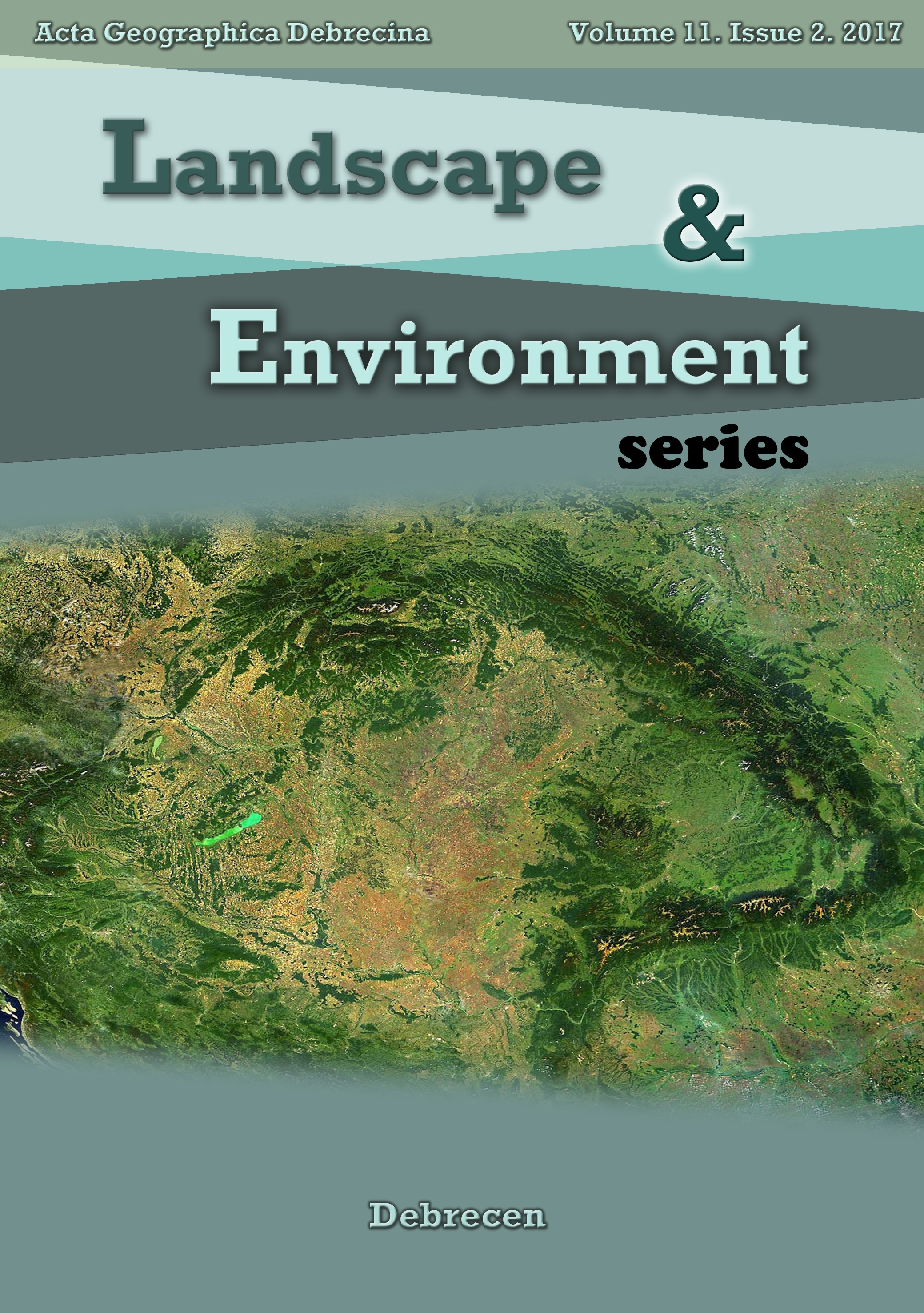Vol. 11 No. 2 (2017)
É. Kis – F. Schweitzer – D. Lóczy. Paleoenvironments reconstructed from the analyses of loess sequences on Susak Island, Adriatic Sea
N. Szopos – B. Czellecz. High water level observations along the upper course of the Olt River (Romania) from a hydrological modelling aspect
##issue.tableOfContents##
Articles
-
Paleoenvironments reconstructed from the analyses of loess sequences on Susak Island, Adriatic Sea
1-9Views:303Susak Island is the outermost member of the archipelago of the Kvarner Bay, North Adriatic Sea, Croatia. Its long-term landscape evolution is defined by tectonic movements. Most characteristic are partly exhumed landforms of an ancient terrane (scarps, uplifted limestone cliffs) in a still active neotectonic environment, but the most appropriate tools for the reconstruction of Quaternary paleoenvironments are loess and loess-like deposits. The Quaternary sequence is up to almost 100 m thickness locally and intensively studied by numerous disciplines (from structural geology to geochemistry and geomorphology) today. The special location of the island makes it a key area of research into the evolution of the broader environment, including the Po Plain as well as other Italian source areas of wind-borne and redeposited dust. The loess mantle was also of great importance for a paleoecological reconstruction of floral and faunal evolution, on which efforts of nature conservation are founded.
pdf81 -
High water level observations along the upper course of the Olt River (Romania) from a hydrological modelling aspect
10-19Views:329Along its upper course, the Olt River (Romania) flows through several settlements, which are endangered by flooding. The multiannual water flow at Tomești station, the first hydrometric station along the Olt River, is 1.51 m3 /s, but in case of extreme events the river flow reached even 41.8 m3 /s. The aim of this study is to analyze the flood events along the upper course of the Olt River (section between Tomești and Cârța settlements) by using the HEC-RAS and the HEC-GeoRAS hydrological modeling software programs. The river cross section model showed how the main channel narrowed (characteristic to some locations) which can be considered as one of the causes of a possible overflow.
pdf142
